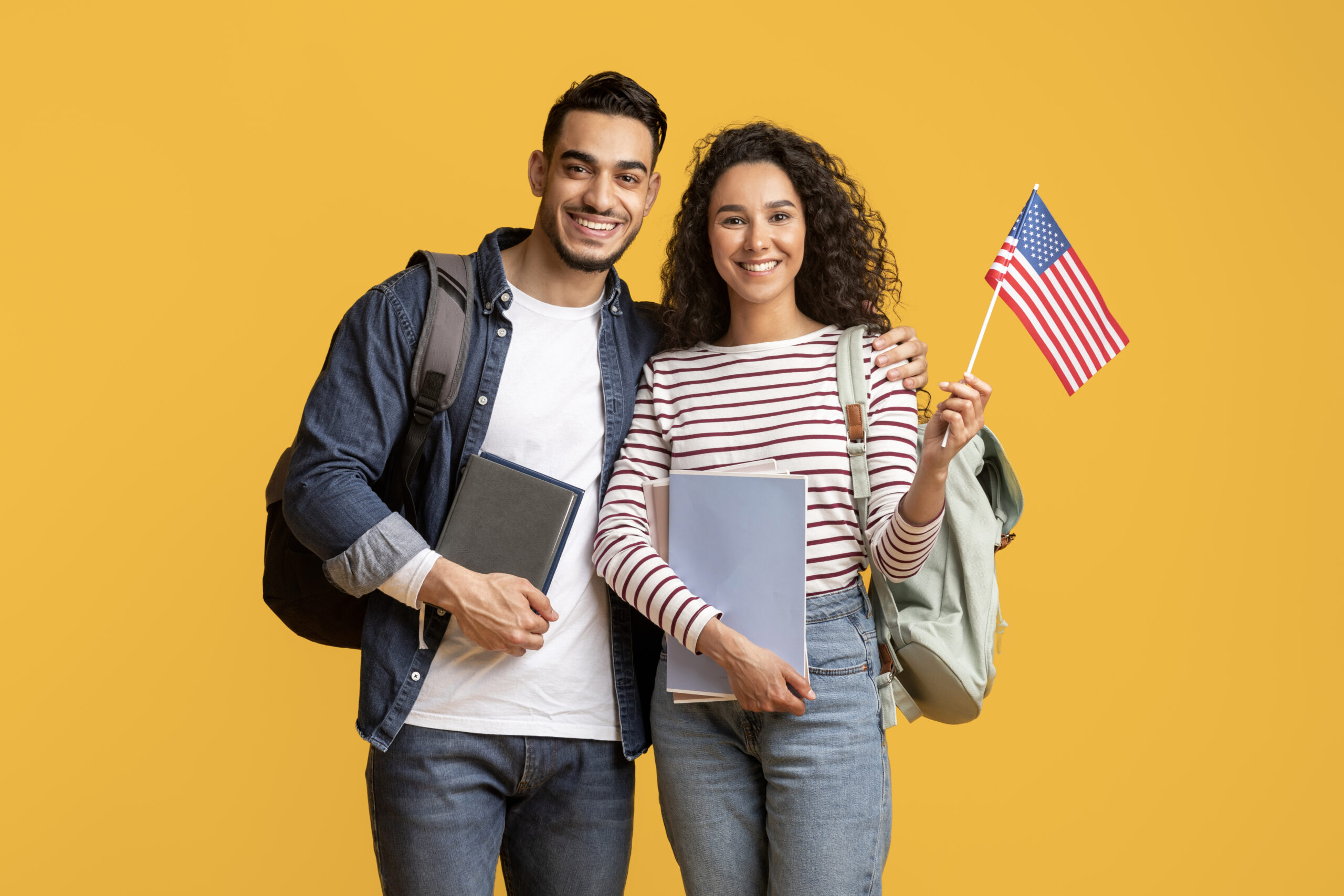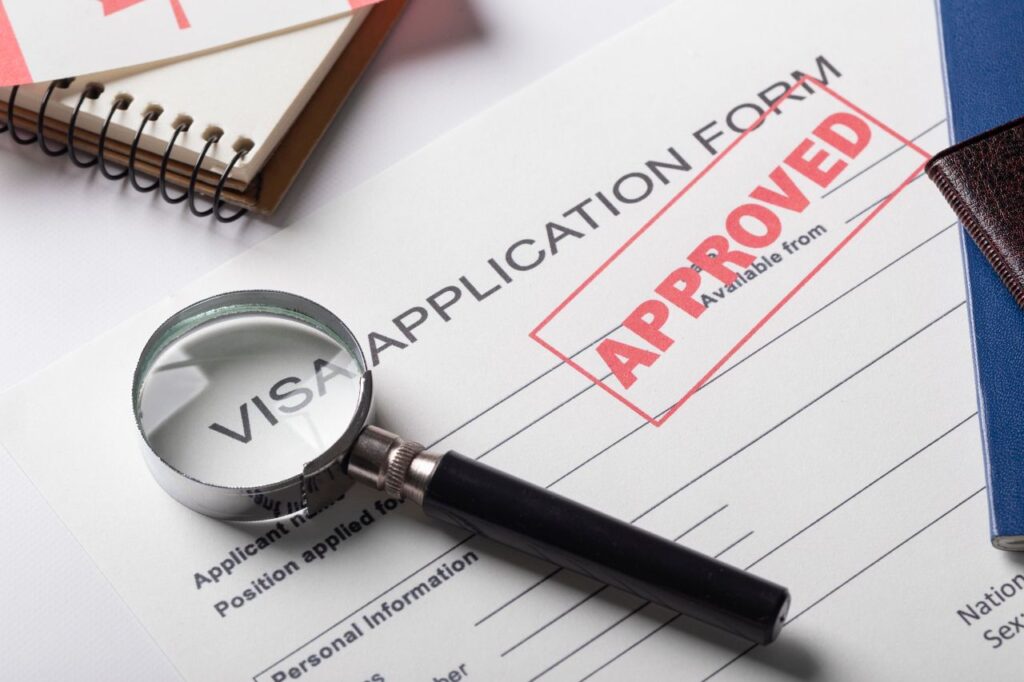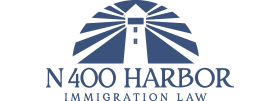
Take the Stress out of Applying for a Student Visa with Our Easy 3-step Guide.
Are you looking for information on how to apply for a student visa? Are you a student looking to study in the United States? If so, you will need a student visa to pursue your studies legally. In this guide, we will cover everything you need to know about how to get a US student visa, from the application process to tips for a successful interview.
Key Takeaways
- The United States government offers 3 student visa types: F, M, and J
- Before you can apply for a student visa, you must first apply and be accepted by a U.S. institution of higher education that is SEVP-approved
- Hiring a licensed Attorney to help you can make this process much simpler
- You may NOT travel to the US on a student visa until 30 days before your School’s start date.
Types of US Student Visas
Before we dive into how to apply for a student visa and the application process, let’s first understand the types of student visas available in the United States. There are 3 categories: F, M and J visas.
- F Student Visa: F visas are for academic studies and English language programs at a SEVP-approved and accredited U.S. college or university.
- M Student Visa: M visas are for non-academic or vocational studies.
- J Visa: This visa is for exchange visitors, including study abroad students, scholars, interns, and au pairs.
Within these categories, there are subcategories that depend on the type of program you will be attending, specific status for your spouse, and if you are a Canadian or Mexican citizen. Please use the chart below for more clarity:
IN THIS ARTICLE
| Students: Academic and Vocational (F and M visas) | |
| F-1 | Academic students |
| F-2 | Spouses and children of F-1 |
| F-3 | Canadian or Mexican national academic commuter students |
| M-1 | Vocational students |
| M-2 | Spouses and children of M-1 |
| M-3 | Canadian or Mexican national vocational commuter students |
| Exchange Visitors (J visas) | |
| J-1 | Exchange visitors |
| J-2 | Spouses and children of J-1 |
3-Step Application Process
The application process for a US student visa can seem overwhelming at first, but it is relatively straightforward. Let’s get started step-by-step on how to apply for a student visa in the US:
STEP 1: Pick a US School and Apply for Enrollment
The first step on this is to apply to an SEVP-approved school in order to receive the Form I-20, which confirms your enrollment and program details. The school you apply to must be approved by SEVP. To find out if your desired institution is indeed SEVP approved, make sure your school is listed here: SEVP Certified School List
STEP 2: Pay the I-901 SEVIS Fee
Once accepted at an SEVP-certified school, you will receive your Form I-20 (or DS-2019 for J-1 Visas) from the institution’s international student office to present when you apply for your student visa. You will then need to pay the I-901 SEVIS Fee F, M or J visa applicants and complete the DS-160 form online.
Need help with this Fee?: I-901 SEVIS Fee Assistance
- Email: fmjfee.SEVIS@ice.dhs.gov
- Phone: I-901 SEVIS Fee customer service hotline at (703) 603-3400
Form DS-160:
To complete the Online Nonimmigrant Visa Application Form DS-160, it is important that you have the following items readily available:
- Your passport
- A visa photograph, which you will need to upload (see requirements)
- Form I-20 or DS-2019. Please remember that the form you require will depend on whether you are an F-1/M-1 or J-1 student.
SEVIS Fees:
Description | Amount |
I-901 SEVIS Fee F or M visa applicants | $350 |
I-901 SEVIS Fee J visa applicants | $220 |
I-901 SEVIS Fee special J-visa categories | $35 |
I-901 SEVIS Fee government visitor | $0 |
Furthermore, while completing this application, you will need to select the US embassy where you intend to apply for your visa interview. It is crucial to note that you must fill out the entire form in English, except when you are asked to input your full name in your native alphabet.
For further information on how to complete this form, please refer to the official DS-160 FAQ page. After submitting the form online, make sure to print out your confirmation page and bring it with you to your visa interview.

STEP 3: U.S. Embassy or Consulate Interview
Next, you will need to schedule an appointment for an interview at the nearest US embassy or consulate. During the interview, you will be asked about your academic background, your intentions for studying in the US, and your plans after you complete your studies. It is essential to be prepared and honest during this process. Also, there is an application fee of US $160, Which the embassy should instruct you how and when to pay this visa application fee.
Tips for a Successful Interview
The interview is a critical part of the application process, and it is essential to prepare adequately. Here are some tips for a successful interview:
- Dress professionally
- Arrive early
- Bring all required documents (see below checklist)
- Be honest and straightforward
- Practice your English language skills
Required Documents Checklist
To apply for a US F1 student visa at a U.S. Embassy or Consulate, you will need to provide several documents. These include:
- Form I-20
- SEVIS fee receipt
- Any other application payment receipt
- DS-160 confirmation page
- Valid passport
- Two recent passport-sized photos
- Academic transcripts and diplomas
- Test scores (e.g., TOEFL, SAT)
- Financial documentation (e.g., bank statements, tax returns)
- Proof of ties to your home country
Frequently Asked Questions
about the Student Visa Application Process
A: After following the aforementioned steps and obtaining approval for an international student visa to the United States, your passport will be returned to you by your embassy along with the newly issued visa.
It’s important to note that certain embassies may require you to personally retrieve the document, while others may opt to send it to you via mail. The processing time for visas will differ based on the embassy you applied to. To get an idea of the estimated processing time for your visa, you can visit the US Visa Appointment Wait Times Website.
A: Yes & No. As an international student who is in the US on a visa, you can’t just go out and get any job you want; however, it is possible to work on a student visa in the US but under specific circumstances.
According to the Department of Homeland Security, F-1 students may accept on-campus ONLY employment during the first year of studies, and are subject to certain conditions and restrictions. After the first academic year, F-1 students may engage in of off-campus employment related to:
- Curricular Practical Training (CPT)
- Optional Practical Training (OPT) (pre-completion or post-completion)
- Science, Technology, Engineering, and Mathematics (STEM) Optional Practical Training Extension (OPT)
Also, for both F-1 and M-1 students any off-campus training employment must be related to their area of study and must be authorized prior to starting any work by the Designated School Official (the person authorized to maintain the Student and Exchange Visitor Information System (SEVIS)) and USCIS.
A. An F-1 visa is issued for up to 5 years. However, the residence status in the United States is valid for the entire duration of the study and is noted on the I-20 form.
Final thoughts
Applying for a US student visa can be a challenging process, but with proper preparation and the help of a licensed US Immigration Lawyer, you can increase your chances of success. Remember to stay organized, be honest, and present yourself professionally during the interview. We hope this guide has been helpful in your journey to study in the United States.

